What is the Persistent API Setting?
The persistent API setting supports various styles for generated code. It can be configurated in Database Code Generation dialog box.
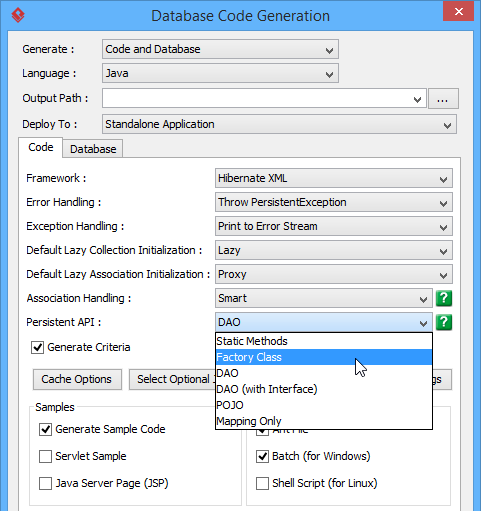 |
| Persistent API setting |
Static methods
Static methods generate all persistent methods in the persistent class, client can access the methods in the same persistent object.
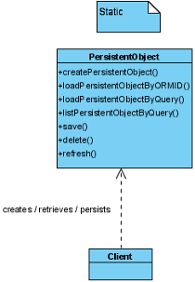 |
| Static methods |
Factory class
Factory class generates save/delete/refresh methods in persistent class, other persistent methods that return persistent object are generated in factory class.
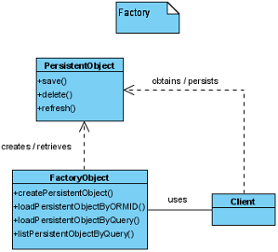 |
| Factory class |
DAO
DAO generates all persistent methods in DAO class, a DAO class is generate for each persistent class.
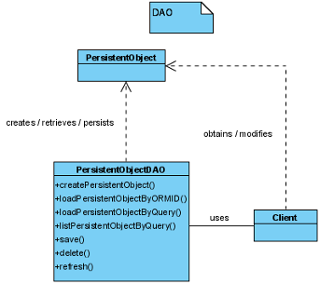 |
| DAO |
DAO (with interface)
DAO (with Interface) generates all persistent methods signature in DAO interface. A DAO interface is generate for each persistent class, and a corresponding DAO implementation class is generated with default persistent implement.
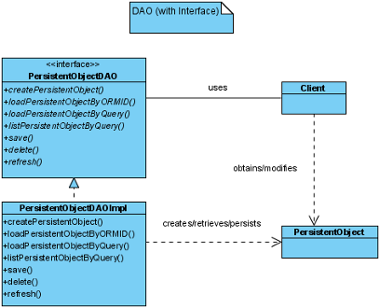 |
| DAO (with Interface) |
POJO
POJO generate persistent object in Plain Old Java Object style, without generating any persistent methods. Client can access persistent methods in PersistentManager object.
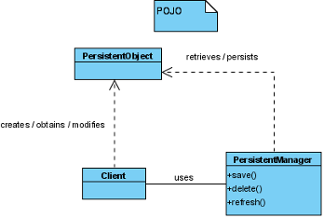 |
| POJO |
Mapping only
Mapping only does not generate any code, it only generates the XML mapping file required for ORM.
Related Resources
The following resources may help you to learn more about the topic discussed in this page.
| 2. Lazy collection setting | Table of Contents | 4. Using generated code |
